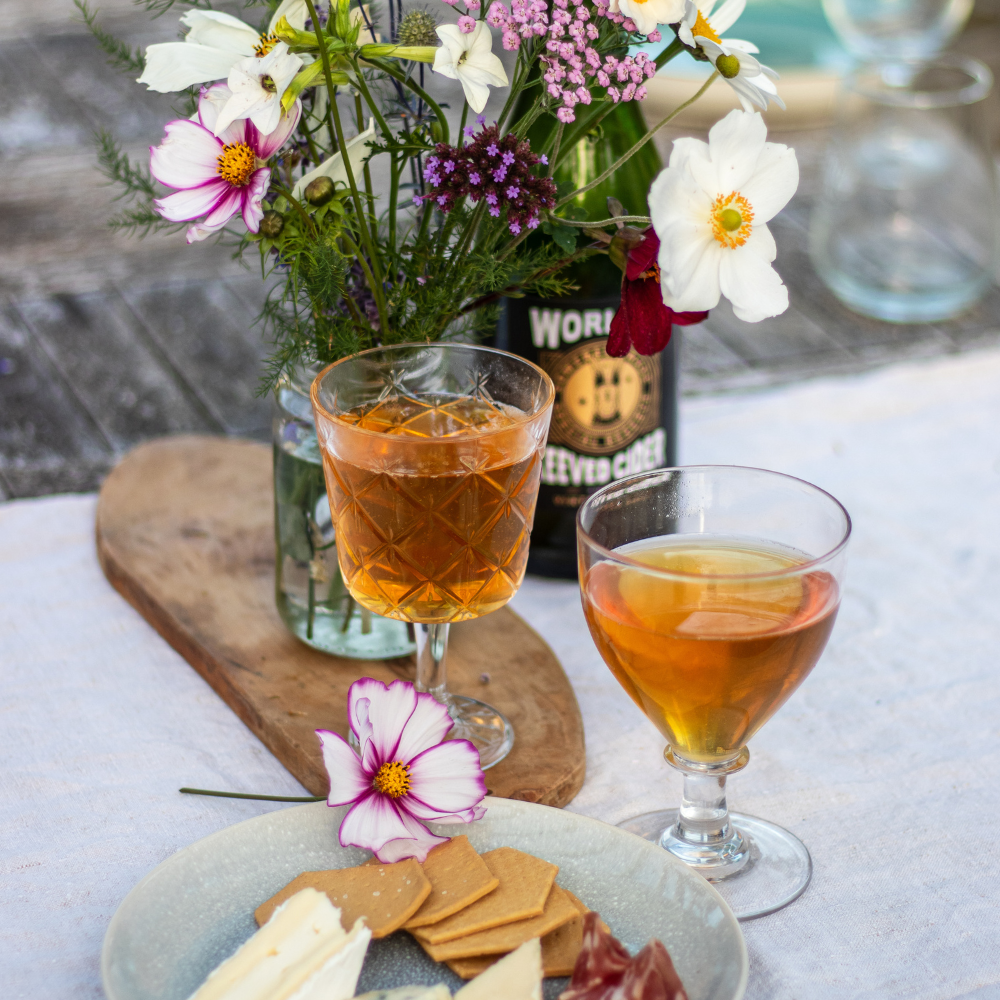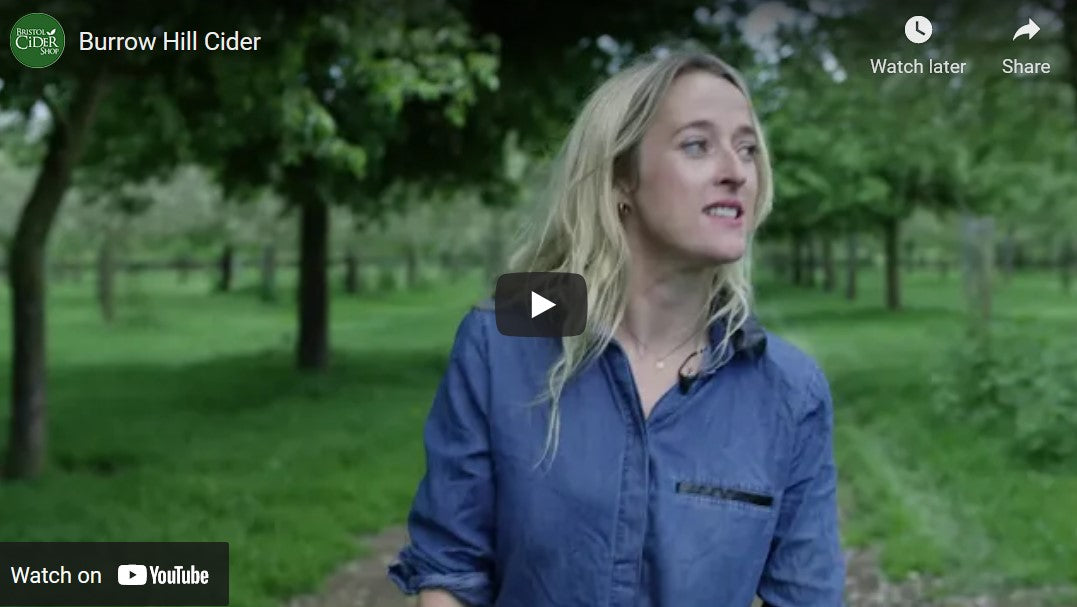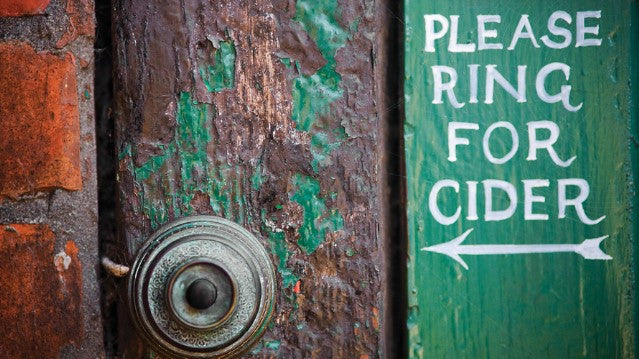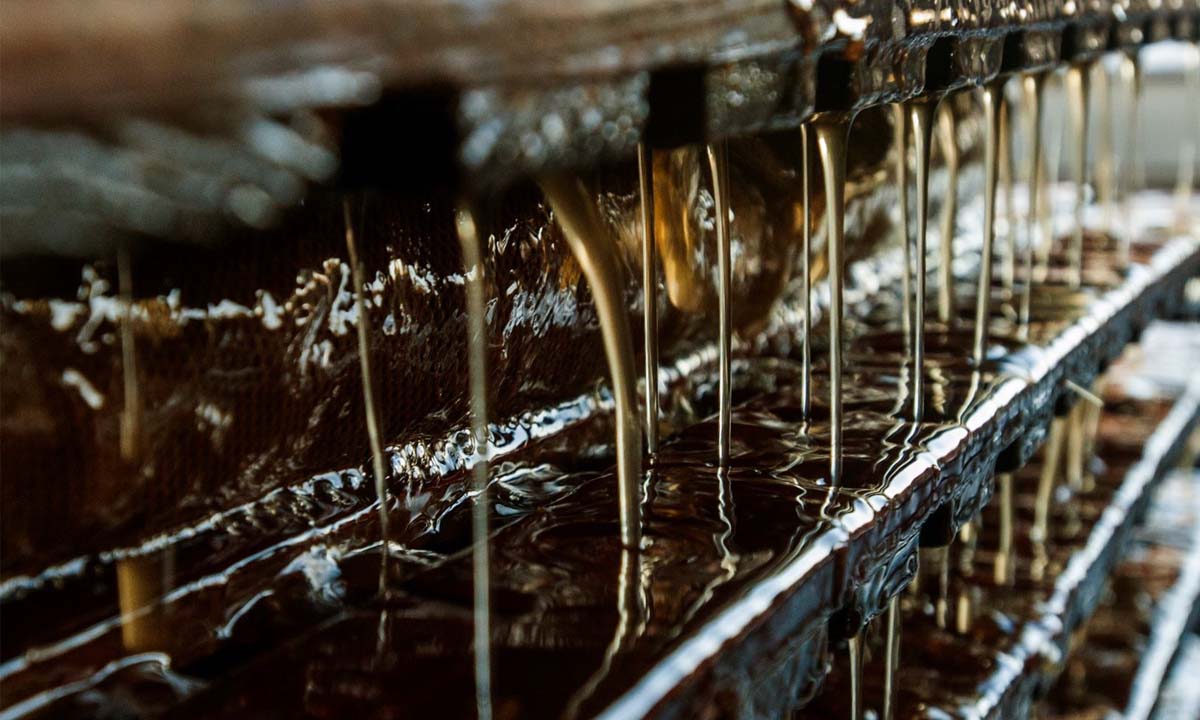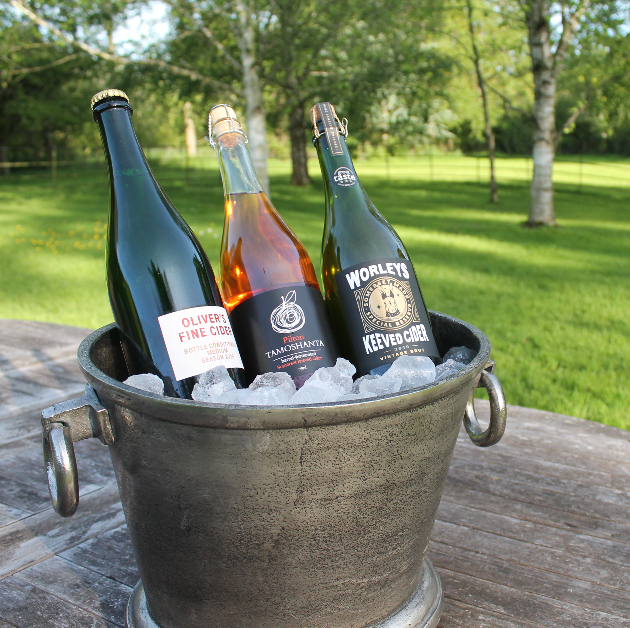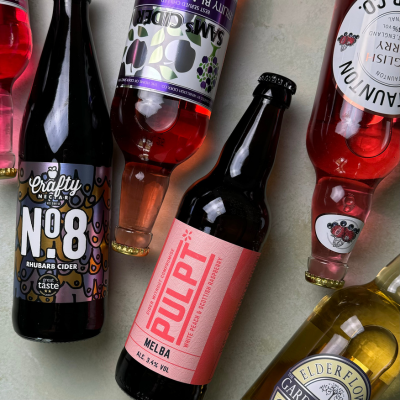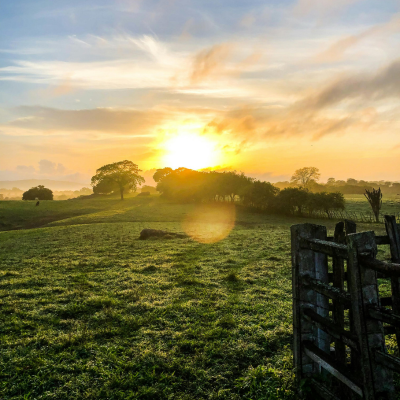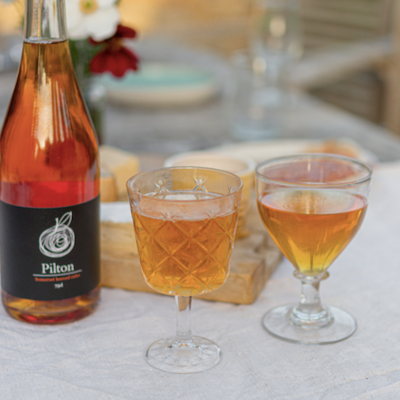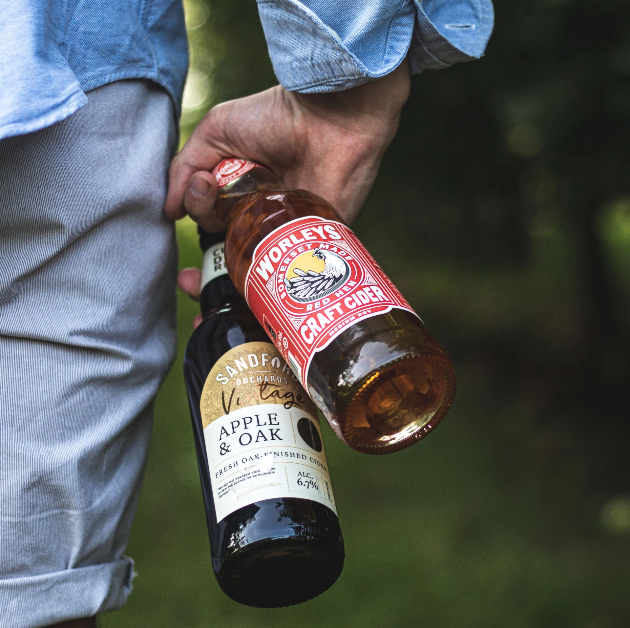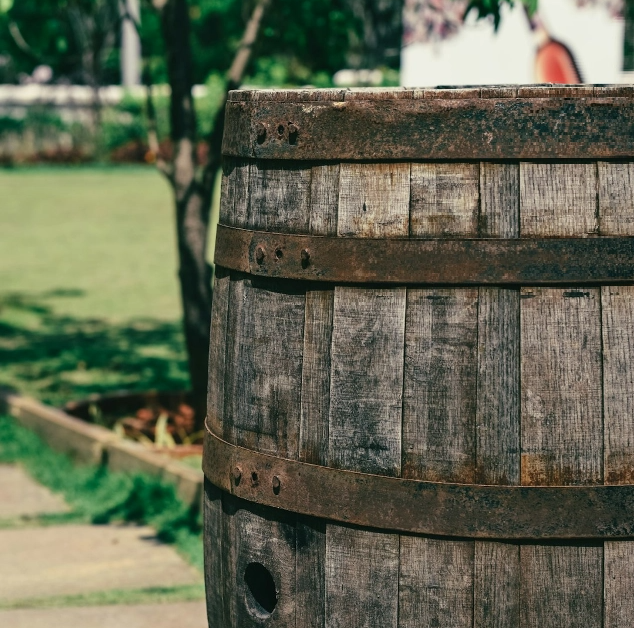Everything you need to know about craft cider
A lot of people just think of cider as a refreshing alternative to beer when the sun's shining. But craft cider is so much more than that: it is one of the most natural drinks there is and opens up a whole world of flavour and tradition which is just as rich and complex as wine.
In this blog post, we'll discuss what craft cider is, how it's made and why you should try some!
What is craft cider?
The first thing to know about craft cider is that it's made from fresh-pressed apple juice. This means that the flavour is much more complex than mass-produced cider. There are hundreds of different types of apple, and each one brings its own unique flavour to the cider, in the same way that different grapes produce different types of wine.
How do you make cider?
One of the joys of craft cider is that it is completely natural - the only thing that goes into cider is fresh-pressed apples. Cider-makers pick the apples in the autumn, press them, and then leave the juice to ferment over the winter. The yeast that lives on the apples turns the sugar into alcohol and after 3-6 months you get cider!
What type of apples do you use to make cider?
West Country cider is made from cider apples, which are full of tannin and acidity. They’re no good for eating but when they ferment they’re full of flavour and this is the hallmark of a good cider. Most craft ciders are blended from 2-20 types of apple and the real skill of the cidermaker is in blending all of their different characteristics.
Can you make cider from any apples?
You can make cider out of any apples and this will have a big impact on the resulting flavour. Eastern Counties cider tends to be made from eating apples and as a result it is lighter and less tannic than West Country cider but tends to be stronger (sometimes up to 8%!)
Is cider still or sparkling?
Some cider is still and some is sparkling and it's just personal preference which kind you prefer. Farmhouse cider is still because that's how cider was made traditionally. More modern styles of cider tend to be sparkling and sparkling cider can either be carbonated or 'bottle-conditioned' to create a natural sparkle in the bottle.
What is 'scrumpy'?
Farmhouse cider (or ‘scrumpy’) is the most traditional form of cider. It is made from lots of different types of apples and is simply fermented until all of the sugar has turned to alcohol. It is still (flat), cloudy and will typically be very dry. It is not to everyone’s taste and is sometimes referred to as ‘rough cider'!
How is craft cider different to other cider?
The difference between commercial cider and craft cider is like the difference between fast food and a home-cooked meal. Commercial cider-makers use highly concentrated apple juice, which means they have to add artificial flavourings to recreate the taste of real cider. Craft cider-makers use fresh-pressed apples, so their cider is 100% natural.
How do you know what's in your cider?
There is no requirement to list ingredients on alcoholic drinks, or even to display what percentage of juice is used. Luckily, real cider-makers are very proud of what goes into their cider so they will list exactly what is in the bottle, on the bottle! Look out for the words "made from 100% freshly pressed juice" or similar.
Cider and food
Cider is excellent with food and it is similar to matching wine and food. A light cider will go well with delicate fish or white meats and a more full-bodied cider will go better with richer dishes. Cider is especially good served with cheese or pork - the rule is basically if it goes well with apples it will probably go well with cider!
How to serve cider
Cider is generally served chilled but, as with all drinks, the colder you serve it the less you can taste the flavour of the cider. We recommend serving cider at cellar temperature which is 10-12 degrees but if you don't happen to have a wine cellar then garage or shed temperature also works just fine!
Craft beer and craft cider
Craft cider is following craft beer with more and more small, independent producers popping up all over the place. Like craft beer, these cider-makers are experimenting with different techniques and flavours to create new and exciting ciders and they are all contributing to a very vibrant craft cider industry.
What's the difference between cider and cyder?
There's no difference between cider and cyder it's just a different spelling. Some producers think that cyder is a more traditional spelling but the earliest recorded use of the word cider spells it with an 'i' so we're going to stick with 'cider'!
Different Types of Cider
There are many different types of cider available and it can be confusing to know where to start. Here is a quick guide to some of the most popular types of cider:
- Farmhouse (Scrumpy) Cider: This is the most traditional type of cider. It is typically made with cider apples, which produce a dry, still, cloudy cider which is around 6% ABV. It is strong in alcohol and flavour and is not for the feint-hearted!
- Sparkling Cider: Most widely-available cider is sparkling. This is made from a mix of cider and eating apples and then carbonated to produce a lighter, fruitier drink that is more accessible for the casual cider drinker. It is usually around 4-5% ABV.
- Vintage Cider: Vintage cider is particularly good cider from a single year's harvest, which is matured in oak barrels for up to a year to develop the flavours. It will usually be stronger in flavour and alcohol and will often be up to 7-8% ABV.
- Single-varietal cider: Most ciders are blended from different types of apple but a few apples have enough complexity to be used on their own. These single-varietal ciders are made from varieties like Kingston Black, Dabinett and Yarlington Mill.
- Barrel-aged cider: Cider is often matured in wooden barrels to help develop the flavour. By using different spirit barrels, you can create an extra level of complexity and cider is often matured in rum or whisky barrels.
- Keeved cider: Most French ciders are made using the technique of 'keeving'. This stops the fermentation process before all the sugar has turned into alcohol, resulting in a smooth, fruity cider which is typically only 3-4% ABV.
- Bottle-conditioned cider: The traditional way of making cider sparkling is to finish the fermentation in the bottle, which produces carbon dioxide and creates a natural sparkle. The only downside is that it also produces sediment in the bottle.
- Fine Cider: A growing number of craft cider makers are making 'fine' cider, which is aimed at the cider connoisseur. They typically made using the more complex techniques outlined above to produce a cider similar in character to natural wine.
- Ice Cider: Ice cider was invented in Canada and is made from frozen apples to produce a concentrated, sweet cider. Ice cider is similar to a dessert-wine and is perfect after dinner with cheese or desserts.
- Fruit Cider: As the name suggests, fruit cider is made with a mixture of apples and other fruits to produce a sweeter cider with a very fruity flavour.
- Perry: Perry is the pear equivalent to cider. Proper perry is made from perry pears, in the same way that cider is made from cider apples. It produces a light, delicate drink with earthy undertones and is not to be confused with 'pear cider'!
Where to find craft cider
Small batch cider doesn't lend itself to mass production so it's difficult to find in the supermarket. The best place to find proper cider is direct from a cider farm but if you can't make it to the farm then your best bet is a good retailer that knows their apples.
What next?
So there you have it, everything you need to know about craft cider! We hope you've found this helpful and that you'll go out and give craft ciders a try. Check out our selection of Craft Cider Mixed Cases for a great place to start or why not try one of our Cider Tasting Kits?


